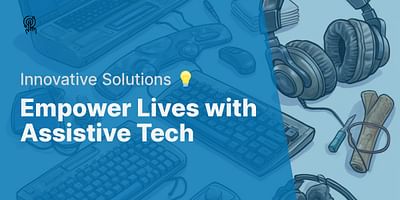Alessandra is a proficient software developer with a burning passion for creating user-friendly technology specifically designed for individuals with disabilities. She possesses extensive experience working on projects that utilize machine learning to enhance accessibility. Alessandra continually seeks innovative approaches to make technology a more inclusive space.
Adaptive technology can be a game-changer for disabled learners in educational settings. It refers to tools and devices that are specifically designed to assist individuals with disabilities in their learning journey. These technologies aim to level the playing field, enabling students with disabilities to access educational materials, participate in classroom activities, and demonstrate their knowledge and skills. In this article, I will discuss how adaptive technology can benefit disabled learners in educational settings and provide some examples of popular adaptive technologies.
One of the most common types of adaptive technology is screen readers. Screen readers are software programs that convert text on a computer screen into synthesized speech or braille output. They enable individuals with visual impairments to access digital content, including textbooks, websites, and online resources. By using screen readers, students can independently read and navigate through educational materials, enhancing their learning experience.
Another useful adaptive technology is one-handed keyboards. These keyboards are designed for individuals who have limited or no use of one hand. They allow students to type and input information using a single hand, making it easier for them to participate in classroom activities, take notes, and complete assignments. One-handed keyboards often have a compact and ergonomic design, ensuring comfort and efficiency for disabled learners.
Speech-to-text software is another powerful adaptive technology that can benefit disabled learners. This software converts spoken language into written text, allowing students with speech impairments to communicate and participate in class discussions. It also helps students with writing difficulties, such as those with dysgraphia, by enabling them to dictate their thoughts and ideas. Speech-to-text software can be used on computers, tablets, and smartphones, providing flexibility and accessibility for disabled learners.
In addition to these individual assistive technologies, accessible web design and mobile apps play a crucial role in supporting disabled learners. Accessible web design ensures that websites and online resources are designed and developed in a way that is inclusive and usable for individuals with disabilities. This includes providing alternative text for images, using clear and simple language, and ensuring compatibility with screen readers and other assistive technologies. Mobile apps designed with accessibility in mind can provide disabled learners with additional tools and resources to support their learning needs.
To give you a few more examples, assistive teaching technologies such as interactive whiteboards, adaptive learning software, and educational apps can help disabled learners engage with educational content in a more interactive and personalized way. These technologies can adapt to the individual needs and learning styles of students, providing targeted support and feedback.
Overall, adaptive technology has the potential to transform the educational experience for disabled learners. It empowers them to access information, participate in classroom activities, and demonstrate their knowledge and skills. By leveraging the power of adaptive technology, educational institutions can create more inclusive and accessible learning environments for all students.















